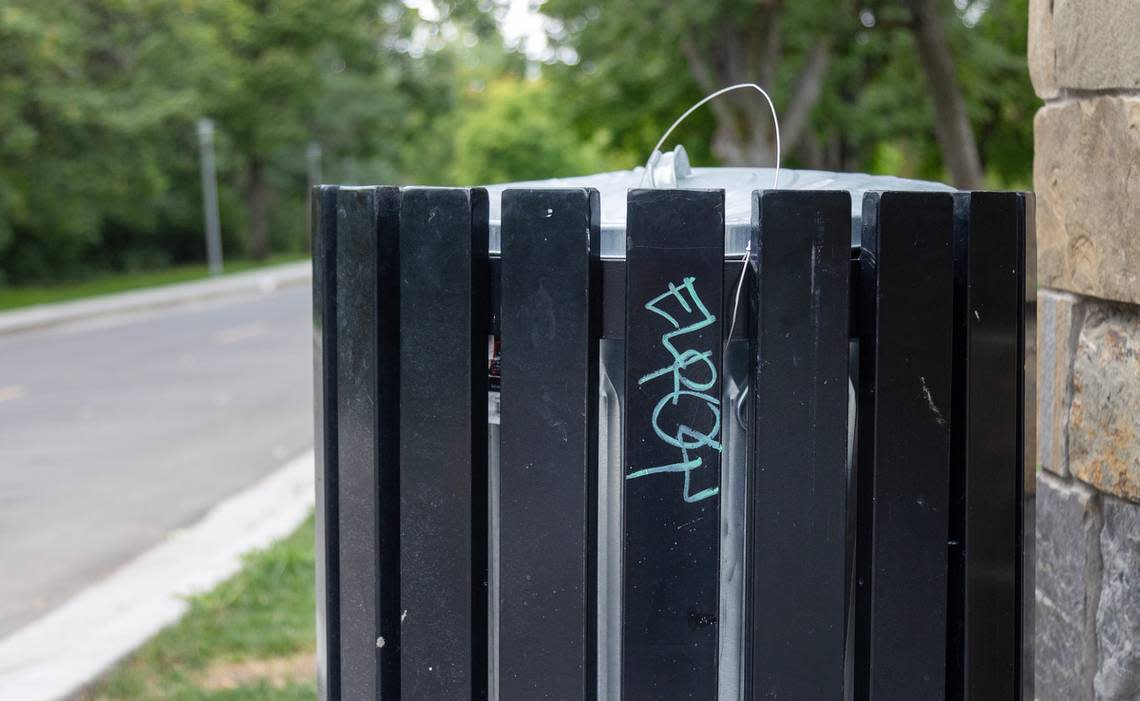A new Boise law is supposed to make cleaning graffiti easier. This is what it will do
A new city graffiti law in Boise aims to make it easier for the city to clean up the unsanctioned paint, even if a landowner is not cooperative.
After multiple meetings to discuss challenges accessing graffiti on private property, the City Council adopted an ordinance on Sept. 12 that allows the city to paint over graffiti, even if a landowner does not respond to requests from officials that the owners remove graffiti themselves.
Here are answers to three key questions about the ordinance.
1. Why is the city making this law?
“This is designed to give us the tools to help those that are victims of graffiti more quickly,” Mayor Lauren McLean said about the measures in August.
A memorandum from Jennifer Pitino, a city lawyer, said there has been a “growing amount of graffiti defacement on public and private property throughout the city’s limits.”
Boise has had several high-profile incidents of graffiti on public property in recent years, including antisemitic markings near the Anne Frank Memorial downtown.

By defining graffiti as a nuisance in Boise’s code, the city will be able to treat it as officials already do other nuisances, like overly tall weeds or junk on a property, Kristine Miller, McLean’s deputy chief of staff, told the Idaho Statesman.
Reports of graffiti have risen since 2018, when 254 incidents were reported, according to city data. That figure rose to 468 in 2019 before dropping during the COVID-19 pandemic. There were 307 reported incidents in 2022, and there have been 218 so far this year, according to the data.
Miller said the new law should also make it easier to clean up graffiti if a property owner is out of town or out of state.
“If the owner says, ‘I don’t live here, I’m not in the area,’ this allows us to say OK, can we help you clean it up?” Miller said.
2. How would the law work?
If an owner whose property gets tagged is unresponsive, the city’s code compliance officers will have to wait 10 days before they can enter the property and clean it up, Mayor Lauren McLean’s spokesperson Maria Weeg told the Statesman. That’s the same standard that applies to other nuisances, and is the time-frame within which nuisances are required to be “abated” in city law.
Under the previous rules, the city cannot quickly access private property to remove graffiti.
When graffiti is reported through non-emergency dispatch, the Boise Police Department will respond and document it and start a crime report, Miller said. Then the problem will be forwarded to the city’s code compliance office, which will contact the owner and coordinate cleanup.
Weeg said the city plans to “have staff proactively keeping an eye out for graffiti through the course of their regular duties.”
“The public is encouraged to use non-emergency dispatch to report graffiti,” she added.
3. How much would it cost?
For most nuisances, the city charges residents if they are uncooperative with efforts to deal with the problems themselves.
Those costs depend on the size of a property and the type of cleanup, Weeg said. If a residential homeowner with weeds in his yard has not communicated with the compliance office and has not removed the weeds, such a cleanup could cost between $500 and $800, she added.
Still, Weeg said the city tries to gain the cooperation of residents through communication and the extension of time limits, as “one of our primary goals is self-compliance.”
With graffiti, city officials view the situation differently, as graffiti is a crime to the property owner, rather than the owner’s own doing.
The city has budgeted $100,000 to spend on private-property graffiti abatement in the fiscal year beginning Oct. 1, when the new law takes effect. For the next year, the city does not plan to charge property owners to remove graffiti. Miller said removal will be handled by a combination of city code-compliance workers and hired contractors. Once the money is spent, the city plans to provide a report to the council on how it went.
“This update will address the effort’s effectiveness, overall impact, and internal processes,” read a memo from Jennifer Pitino, a city attorney. “Based on that update, the council’s direction may necessitate additional code amendments and a public fee hearing at that time.”
